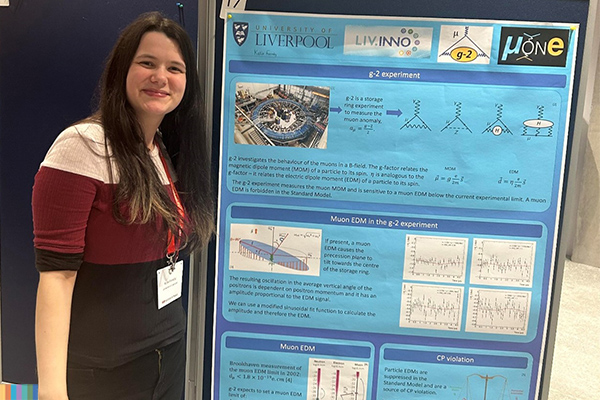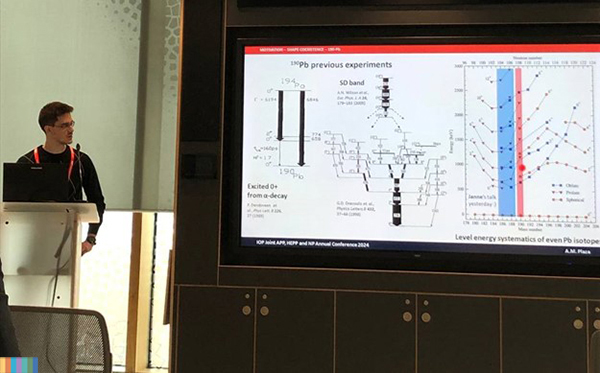LIV.DAT and LIV.INNO students present their work at IoP conference

The joint Astroparticle Physics, High Energy Particle Physics and Nuclear Physics conference organised by the Institute of Physics was held in Liverpool from 8-11 April 2024. Many students from both the LIV.DAT and LIV.INNO CDTs attended and presented their work at the conference. The meeting featured talks from major national and international speakers as well as extensive opportunities for contributed talks and a poster session.
Early in the week two LIV.INNO students, Katherine Ferraby and Thomas Wonderley contributed to the poster session with posters on ‘Measurement of the electric dipole moment of the muon at the Fermilab g-2 experiment’ and ‘Improving the Performance and Reliability of High Purity Germanium (HPGe) Detectors through the monitoring of trace signals’. Katherine won the prize for the best particle physics poster for her contribution. She said: "It was really nice to mingle with physicists from other groups and explore their research and see how all the different experiments deal with the complications of making and running experiments"

Adrian Montes Plaza giving his talk at the conference.
Later in the week, some of the LIV.DAT students, who are nearing the end of their PhD studies, had the opportunity to present their work as part of the contributed talks sessions. Conor McPartland presented his work on ‘A search for lepton flavour violating τ →3μ decays with the ATLAS experiment’ while Adam Tarrant spoke about ‘BUTTON Simulations for the Development of WbLS’. Adam Lowe contributed with his talk ‘ARIADNE+: Large Scale Demonstration of Fast Optical Readout for Dual Phase LArTPCs at the CERN Neutrino Platform’ while Beth Slater spoke about ‘Sterile Neutrino Oscillation Searches using the VALOR Fitting Framework at SBN’. Finally Adrian Montes Plaza spoke about ‘Shape coexistence in neutron-deficient 190-Pb’ and Magda Satrazani presented her work on ‘Shape studies in neutron-rich cerium isotopes’.

Magda Satrazani giving her talk at the conference.
The meeting was an excellent opportunity for PhD students and other researchers in the astroparticle, high energy and nuclear physics fields to come together to learn about the work that others are doing in the field and present their work to the community.
The students who attended all found the conference to be a valuable and enjoyable experience. The conference takes place annually at locations around the UK.